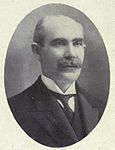
Richard Bedford Bennett, 1st Viscount Bennett,, was a Canadian lawyer, businessman, philanthropist, and politician who served as the 11th prime minister of Canada from 1930 to 1935.
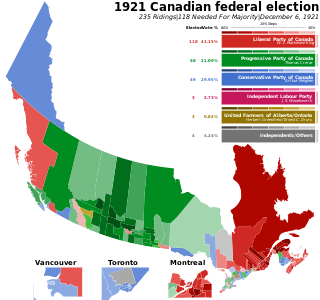
The 1921 Canadian federal election was held on December 6, 1921, to elect members of the House of Commons of Canada of the 14th Parliament of Canada. The Union government that had governed Canada through the First World War was defeated, and replaced by a Liberal government under the young leader William Lyon Mackenzie King. A new third party, the Progressive Party, won the second most seats in the election.

The leader of the Official Opposition, formally known as the leader of His Majesty's Loyal Opposition, is the politician who leads the Official Opposition in Canada, typically the leader of the party possessing the most seats in the House of Commons that is not the governing party or part of the governing coalition.

The Conservative Party of Canada has gone by a variety of names over the years since Canadian Confederation. Initially known as the "Liberal-Conservative Party", it dropped "Liberal" from its name in 1873, although many of its candidates continued to use this name.
The Unionist Party was a centre-right political party in Canada, composed primarily of former members of the Conservative party with some individual Liberal Members of Parliament. It was formed in 1917 by MPs who supported the "Union government" formed by Sir Robert Borden during the First World War, who formed the government through the final years of the war, and was a proponent of conscription. It was opposed by the remaining Liberal MPs, who sat as the official opposition.
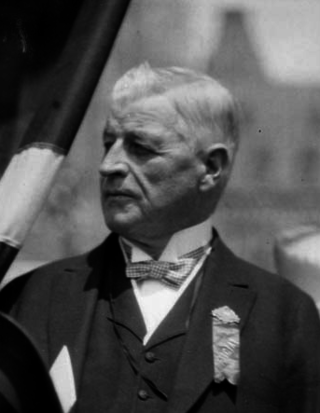
Hugh Guthrie, was a Canadian lawyer and politician who served as a minister in the governments of Sir Robert Borden, Arthur Meighen and R. B. Bennett.
The National Liberal and Conservative Party was the name adopted by the Conservative Party of Canada in 1920 after the end of the Unionist government of Robert Borden.
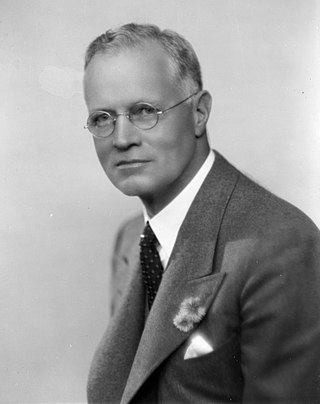
Robert James Manion was a Canadian politician who led the Conservative Party of Canada from 1938 to 1940. Prior to his leadership of the party, he served in Prime Minister Arthur Meighen and R.B. Bennett's cabinets.
Liberal–Unionists were supporters of the Liberal Party of Canada who, as a result of the Conscription Crisis of 1917 rejected Sir Wilfrid Laurier's leadership and supported the coalition Unionist government of Sir Robert Borden.
The first Progressive Conservative Party of Canada leadership election was held in 1927, when the party was called the Conservative Party. Prior to then the party's leader was chosen by the caucus or in several cases by the Governor General of Canada designating a Conservative MP or Senator to form a government after the retirement or death of an incumbent Conservative Prime Minister.

During the history of Canadian politics, thirteen minority governments have been elected at the federal level. There have also been two minority governments resulting from governments being replaced between elections, for a total of fifteen federal minority governments in thirteen separate minority parliaments. There have been historical cases where the governing party had fewer than half of the seats but had the support of independents who called themselves members of the party; these cases are not included, as there was never any serious chance of the government falling.
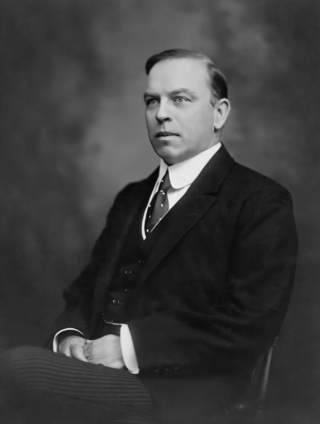
The King–Byng affair was a Canadian constitutional crisis that occurred in 1926, when the governor general of Canada, the Lord Byng of Vimy, refused a request by the prime minister, William Lyon Mackenzie King, to dissolve parliament and call a general election.

The 1926 Canadian federal election was held on September 14, 1926, to elect members of the House of Commons of Canada of the 16th Parliament of Canada. The election was called after an event known as the King–Byng affair.

Esioff-Léon Patenaude,, often called E.L. Patenaude was a Canadian statesman who served as the 17th Lieutenant Governor of Quebec. Born in Saint-Isidore, Quebec, in 1875, he studied law at the University of Montreal and was called to the Quebec Bar in 1899. He established a successful law practice, was soon drawn to politics, and served as a chief organizer for the Conservative Party of Canada in Montreal.

Arthur Meighen was a Canadian lawyer and politician who served as the ninth prime minister of Canada from 1920 to 1921 and from June to September 1926. He led the Conservative Party from 1920 to 1926 and from 1941 to 1942.

The 1919 Liberal Party of Canada leadership election was the first leadership convention held by a federal political party in Canada. It was originally called by the Liberal leader, Sir Wilfrid Laurier, as a national policy convention with the intention of reinvigorating the Liberal Party after eight years of being in opposition. The convention was also intended to re-unite the party, which had split as a result of the Conscription Crisis of 1917. The party had divided into Laurier Liberals, who remained in opposition, and a Liberal–Unionist faction which joined the wartime Union government of Sir Robert Borden in support of conscription. Laurier's death on February 17, 1919 resulted in the meeting being reconfigured as a leadership convention. Previous party leaders in Canada had been chosen by the parliamentary caucus or the outgoing leader. However, the Liberal caucus no longer felt that it was representative of Canada's linguistic and religious diversity and that allowing the entire party to select the leader would result in a more representative choice.

The 1942 Progressive Conservative Party leadership election was held to choose a leader to replace Arthur Meighen for the newly named Progressive Conservative Party of Canada.
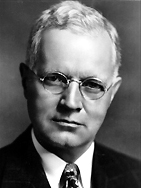
A National Conservative leadership convention began on July 5, 1938, culminating in a leadership ballot on July 7. The Conservative Party of Canada chose Robert James Manion to succeed former Prime Minister R. B. Bennett as party leader.

The article is the electoral history of Arthur Meighen, the ninth prime minister of Canada.

This article is the electoral history of R. B. Bennett, the eleventh Prime Minister of Canada.



